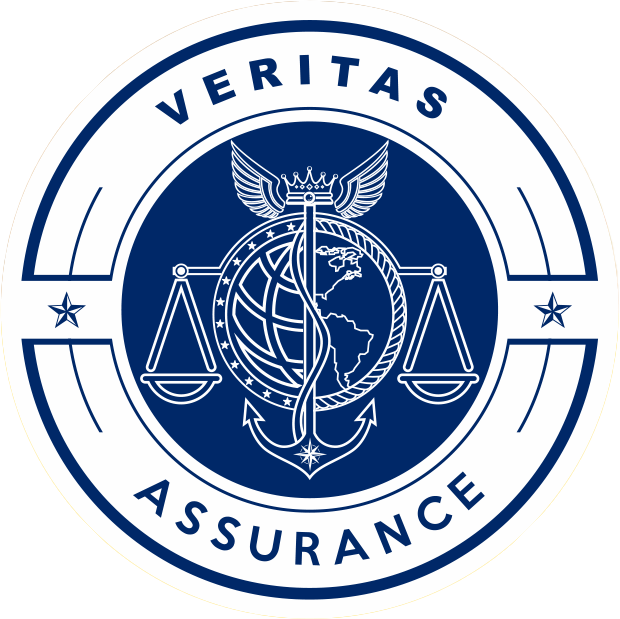During times of distress in the financial markets, institutions rely on risk management professionals to make crucial decisions that determine the fate of the organisation and its investors. A key ingredient of an organisation’s success is the ability to effectively manage and control its risks in complex global markets.
This course will provide institutions that rely on risk management professionals such as treasurers, risk analysts and portfolio managers with the knowledge to analyse risk and make informed decisions to control it.
Risk management is a crucial input into the strategic decision making of the bank, the way in which scarce assets are allocated, and the measurement of performance. The course includes a review of the latest models used by organisations to manage risk and the traditional techniques that enable managers to quickly assess and control it.
The three main sources of risk: market, credit and operational will be addressed. Delegates will analyse the general behaviour and risks of various markets and financial instruments, how these risks occur, how they may be measured, what mitigation approaches may be adopted and ultimately how the risks may be managed. Particular emphasis will be paid to the various approaches proposed in the new Basel Accord.
The course will also discuss firm wide risk management and the internal uses of economic capital to improve the allocation of scarce resources.
- Understand the central role of risk management within a modern financial institution
- Gain an overview of the main approaches being used .to measure market, credit and operational risks
Course Objective:
An intensive five-days training course for risk management professionals in banks, corporate treasury and financial institutions
Covering:
• The broad scope of risk management, including the proposals in the new
· Basel Accord
• The reporting of market risk using both traditional and modern approaches
• The alternative approaches to credit modelling a portfolio
• How operational risk is being managed and measured
• The effectiveness of cross-sector risk transfer
• Enterprise wide risk management
Course Certificate:
Masters Consultant certificate will be issued to all attendees completing minimum of 75% of the total tuition hours of the course.
Who Should attend?
- Risk managers in financial institutions
- Rating agency analysts
- Financial controllers in large institutions
- Credit risk analysts
- Portfolio analysts/managers
- Treasurers
Course Outline:
Module One:
THE SCOPE OF RISK MANAGEMENT Risk Management
The evolution of banking risk:
- Introduction of the old Basel Accord
- G30 report
- Outline of the proposed new Accord
Case Study: Bankers Trust the evolution of bank risk management
From a cost centre to a strategic competitive weapon
Risk Management and the Basel Accord II
• Objectives of the new Accord
• Structure of the new Accord
• Pillar I: proposals for the three classes of bank risk
- What constitutes bank capital?
- Regulatory models for the estimation of credit risk
- Regulatory models for the estimation of market risk
- Regulatory models for the estimation of operational risk with examples of the capital calculations
Results from the Quantitative Impact Studies
• Pillar II: the supervisory review
• Pillar II: interest rate risk
• Pillar III: market disclosure
• Timetable of the new Accord
• Problems that the new Accord may bring
Exercise: Delegates will discuss the current and planned progress of their institution towards the new Accord
Sound Risk Management Practices:
Whilst each class of risk has developed its own methodologies, there are some overarching sound practices required to support the overall risk management function:
• Developing an appropriate risk management environment
• Defining the risk appetite of the institution
• Creation of risk management policies
• Development of risk measurement methodologies
• Creation of an appropriate infrastructure
Exercise: Delegates will discuss the progress of their institution towards sound practices and highlight areas of priority
MARKET RISK
Introduction
Adopting a portfolio approach, the main types of market risks will be discussed:
• What are the main sources of market risk?
- Interest rate, foreign exchange, equity and commodity risks
- Different types of market risk
- Different generations of market risk
- Simulations of different instruments and portfolios, illustrating their characteristics
• Market risk management and measurement
- How do banks measure market risk?
- How do banks manage and control market risk?
Traditional Risk Measures:
• Concepts of delta measures: duration and sensitivity
- Simple comparison for an exposure
• Why is interest rate (IR) risk management difficult?
- Selecting the IR representation: market rates, forward rates, zero-coupon rates
- Brief aside: showing the relationship
- Impact of the IR term structure: gridpoint, multi-factor and imperfect
• Construction and comparison of classic gridpoint delta reports for a portfolio
• Construction and comparison of equivalence reports for the portfolio
Exercise: To produce a sensitivity and equivalence report for a deal
Module Two
MARKET RISK
Traditional Risk Measures (continued)
• Evidence from multi-factor analysis of IR movements
• Construction of classic multi-factor delta and delta-gamma reports
- Including risk measurement against mixtures of parallel and rotational shifts
- Demonstration and discussion about robust risk measurement
• Traditional risk management
- Limit and control schemes
Case Study: Long term capital management
Modern Risk Measures: Value-at-Risk (VaR)
• What is VaR?
• Introduction through a simple 1-factor example:
- Using historic simulation
- Using a delta approximation
- Typical distributional assumptions
- Extension to a 2-factor example
The Practical Implementation of VaR
• Difficulties of collecting appropriate and comparable information
• What are the regulatory requirements of the Basel Accord:
- Qualitative approval process
- Back testing: what is it and how to apply it?
- Stress testing, especially correlation matrix
- Liquidity risk
- Generation of extreme scenarios
• Typical VaR risk reports: what are the main management issues?
- VaR limit and control schemes
Case Study: NatWest Markets
Measurement of Interest Rate Risk
The new Accord makes a distinction between market risk and IRR arising from the banking book.
Banks apply different approaches:
• IRR exposure: earnings and economic value approaches
• Traditional technique: banding and gap analysis
• Applying simulation
Case Study: MG
Exercise: Delegates will discuss the organisation of the market risk function within their institution and the main management reports
Module Three
CREDIT RISK
Overview
• Banks as traditional credit taking institutions:
- Traditional loan exposures
- Provision of guarantees such as letters of credit or trade finance
- Complex derivative transactions
- Case-by-case credit assessment
• Overview of the main types of credit events
- Settlement and pre-settlement risks
• Traditional credit risk mitigation
- Typical industry practices
• Credit rating systems:
- What are the main components of a rating methodology?
- Alternative approaches to a methodology: philosophies and structures
- The rating process: how different banks do it
- Rating agencies: main agencies, what they are trying to achieve? How do they differ?
Credit Risk Modelling
• Credit risk modelling: why is it the new challenge?
- Why is it so hard?
• Overview of the major approaches:
- Accounting approaches such as Z-scores
- Migration approaches such as CreditMetricsTM
- Equity-market approaches such as KMVTM
- Debt-market approaches such as KamakuraTM
• Example of a migration approach
- Modelling for a single obligor
- Merton’s mode: an outline of the basic theory
- Extending to a portfolio: example simulation
- Implementing the model in practice
- Criticisms of the migration models
• What additional insight do the equity-market approaches use?
- Criticisms of the equity-based approaches
- Hybrid models
• What additional insight do the debt-market approaches use?
- Criticisms of the debt-market approaches
Credit Derivatives:
Credit derivatives constitute a rapidly growing section of the derivative market, aimed specifically at the transfer of credit risk. Their applications are increasing daily, and in particular are being used by banks to mitigate their credit exposures.
• Main types of credit derivatives:
- Credit default swaps
- Funded and unfunded CDOs
- Credit-linked notes
• Overview of the market
• Risk management of credit derivatives
Sound Credit Risk Management Practices:
• Establishing a credit risk environment
• Creating a credit granting process
• Maintaining an administration, measurement and monitoring process
• Credit risk controls
Module Four:
OPERATIONAL RISK:
• What is operational risk: alternative definitions?
• Why does the new Accord think it is so important?
• Methodology for managing operational risk:
- Developing suitable objectives and policies
- Process analysis – which are the key processes?
- Risk identification – creating a risk framework
- Creation of an operational risk database
- Process mapping – what are the major risks in any given process?
Case Studies: Barings and Allied Irish Bank
- Key risk indicators – what can be used as a risk metric?
- Operational risk measurement models:
- Statistical modelling
- Score-card approaches
- Network modelling
- Backtesting the model
- Risk reporting
- Exposure management – internal mitigation and insurance
- Exceptional and unexceptional events
• What is current best practice?
• What is an appropriate organisational structure?





